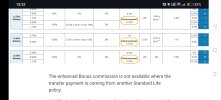It's all about choice really and facilitating competitive pricing for those that know exactly what they're looking for.
Some people value and have respect for what intermediaries may bring to a transaction. Any transaction.
You might even say that some value their contributions here so that they have the confidence to do an execution only transaction.
Some people don't. Never will.
I'm fine with that.
My inbox is filled every day with queries on matters like claiming tax relief, making top ups by EFT, requests for pricing on non-pension products on an EO basis (even protection ones), confirmation of how some of the pricing works and the interaction with other fund costs, requests for assistance with moving from providers with woeful service (and pricing), special off-book pricing queries for large cases, dealing with maximum funding issues on MT Executive pensions, fund switches, customer fallouts with advisors and transfers, tracking down clients with post that's gone undelivered, dealing with provider servicing issues where response times are poor etc etc. etc.
Had to stop answering the phone because it was either a) a scammer b) a tyre-kicker or c) someone who's opening line was 'I know you don't give advice but...'
So I guess I'm not surplus to requirements or 'insufficient'
Gerard
www.prsa.ie
Some people value and have respect for what intermediaries may bring to a transaction. Any transaction.
You might even say that some value their contributions here so that they have the confidence to do an execution only transaction.
Some people don't. Never will.
I'm fine with that.
My inbox is filled every day with queries on matters like claiming tax relief, making top ups by EFT, requests for pricing on non-pension products on an EO basis (even protection ones), confirmation of how some of the pricing works and the interaction with other fund costs, requests for assistance with moving from providers with woeful service (and pricing), special off-book pricing queries for large cases, dealing with maximum funding issues on MT Executive pensions, fund switches, customer fallouts with advisors and transfers, tracking down clients with post that's gone undelivered, dealing with provider servicing issues where response times are poor etc etc. etc.
Had to stop answering the phone because it was either a) a scammer b) a tyre-kicker or c) someone who's opening line was 'I know you don't give advice but...'
So I guess I'm not surplus to requirements or 'insufficient'
Gerard
www.prsa.ie
Last edited:
